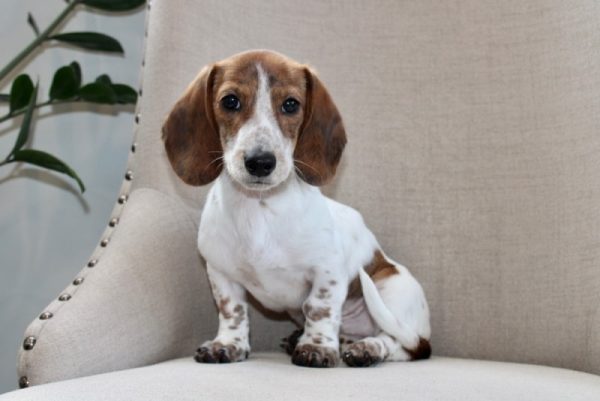In this article
View 8 More +Polish Lowland Sheepdogs hail from Poland. They are often called “PONs,” which is a shorter and easier way to pronounce their name based on the initials of their Polish name, Polski Owczarek Nizinny.
Despite being quite popular in their home country, they are not as well-known outside of Poland. If you’re interested in learning more about these gorgeous dogs, keep reading, as we provide you with all the information that you need!
Breed Overview
Height:
17–20 inches
Weight:
30–50 pounds
Lifespan:
12–14 years
Colors:
Black, white, gray, brown, fawn
Suitable for:
Active families or singles with a house with a fenced yard
Temperament:
Energetic, protective, fearless, devoted, intelligent, affectionate
The PON is a lively, medium-sized working dog that is passionate about herding with bravery and determination but also has a clever and affectionate nature. They have a robust, stocky build and a shaggy double coat, and if not trimmed, their hair perpetually covers their eyes. They come in a range of colors, including brown, fawn, gray, black, and white, but the most common color combination is black and white.
Polish Lowland Sheepdog Characteristics

Polish Lowland Sheepdog Puppies
Polish Lowland Sheepdogs are not common outside of Poland, but you can find breeders scattered across Europe and North America. It’s essential to locate an ethical breeder who can ensure a healthy and well-socialized puppy. This will also reduce the chances of dealing with a puppy mill, which should never be supported under any circumstances. To ensure that you’re talking with a good and reputable breeder, ask them essential questions.
While we typically recommend finding your dog through adoption, the PON is quite rare, and it’s unlikely that you’ll find this breed this way.
Polish Lowland Sheepdog Origin & History
The Polski Owczarek Nizinny is thought to have originated when the Huns brought their herding dogs into Europe, which were crossed with other breeds of Tibetan descent. It’s believed that the PON is a descendant of the Hungarian herding dog, the Puli, along with the Tibetan Mastiff, the Lhasa Apso, the Tibetan Terrier, and the Tibetan Spaniel, with the intent of breeding a self-sufficient herding dog.
The PON grew in popularity across Europe in the late 19th and early 20th centuries, but unfortunately, like so many dog breeds in Europe after World War II, they almost went extinct. Luckily, a Polish veterinarian, Dr. Danuta Hryniewics, used her own male PON, called Smok, to save the breed. It’s believed that all PONs today are descendants of Smok.
The PON was accepted into the Fédération Cynologique Internationale with a breed standard in 1959, also thanks to Smok. The Polish Lowland Sheepdog was initially put into the Miscellaneous class in 1999 by the American Kennel Club and was moved to the Herding group in 2001.


Temperament & Intelligence of the Polish Lowland Sheepdog
The PON is a highly vigilant and watchful breed, which comes with the territory with sheepdogs. This also makes them quite wary around people and dogs they don’t know and protective of their families. They are known to be highly intelligent and hardworking and tend to be happiest when they have a job to do.
PONs are confident and stubborn yet adaptable. While they may appear aloof with strangers, they are affectionate and devoted to their families.
Are These Dogs Good for Families? 👪
PONs make wonderful family dogs! Their loyal nature makes them loving and steadfast companions, and this is especially true when they are raised within the family from puppyhood.
However, owning a sheepdog means you’ll be dealing with a great deal of herding behavior. So, expect your PON to herd your children, which includes nipping at the heels. It’s essential to teach your children how to be gentle with the dog and respect them. This should include allowing the kids to take part in caring for the dog, which will help them understand and develop a sense of responsibility toward the pet.
Does This Breed Get Along With Other Pets?
If the PON is socialized well and raised with other pets, they should be able to get along with them just fine. However, PONs are likely to herd smaller animals, so keep an eye on them.
These dogs are known for their courageous temperament and are more likely to respond to challenges from any other dogs of the opposite sex, regardless of their size.

Things to Know When Owning a Polish Lowland Sheepdog:
Food & Diet Requirements 🦴
Your PON requires high-quality dog food that supports a high-energy breed at your dog’s current age and weight. Choosing the right food for your pup will depend on your budget and what you believe is the best diet for dogs. Some people prefer giving raw food to their dogs, and others opt for fresh food, but these options can be expensive at best and lack proper nutrients at worst. It’s best to speak to your veterinarian about the best food options for your dog and determine the right amount of food to feed them.
Treats should be fed in moderation and primarily for training; obesity is one of the most common health conditions in dogs. Ensure that your PON has access to fresh and clean water 24 hours a day.

Exercise 🐕
The Polski Owczarek Nizinny is a highly energetic dog that requires considerable exercise. You will need to plan for approximately 2 hours of walks and playtime every day, including off-leash time.
Due to all this energy, the PON will do best in a house with a large fenced-in yard, and they will enjoy going on hikes and long walks. Additionally, consider enrolling your PON in activities like dock diving, obedience training, agility, and herding trials to keep them mentally and physically healthy.
Training 🎾
Training a PON can be a challenge, as being confident, independent, and highly intelligent can make them stubborn. They aren’t always recommended for inexperienced dog owners. PONs require a patient and firm hand using only positive reinforcement methods.
Socialization is crucial with the PON because of their general wariness with anyone and anything outside of their family.
Grooming ✂️
It is not recommended to shave down these dogs, as is usually the case with any double-coated canines. Shaving a double coat makes the dog more vulnerable to heat and cold, and their coat never grows back quite the same.
The PON needs brushing several times a week to remove tangles and mats, but they will only need a bath once every few months using dog shampoo. Additionally, it is necessary to trim their nails every 3 to 4 weeks, brush their teeth daily, and clean their ears about once a month.
Health and Conditions 🏥
The Polish Lowland Sheepdog is a robust and healthy breed in general, but there’s always the potential for developing specific health conditions.
- Progressive retinal atrophy
- Hip dysplasia
- Arthritis

Male vs. Female
Like with all dogs, the females are generally smaller and lighter than the males. The PON female stands at a height of 17 to 19 inches, whereas the male’s height ranges from 18 to 20 inches.
It’s important to spay or neuter your PON, as this will help mitigate any behavioral issues that arise with intact dogs. Unneutered males are more likely to display aggression, particularly toward other males, and may attempt to escape from home.
In terms of temperament, there are no significant differences between PON males and females, especially if they have been fixed. However, their personality is largely influenced by how they are raised, trained, and socialized.

3 Little-Known Facts About the Polish Lowland Sheepdog
1. A Polski Owczarek Nizinny could predict a bomb hit
One PON by the name of Psyche (aptly named) was able to predict when a bomb was about to drop in Warsaw during World War II. Before a bomb fell, she would run around alerting people to take shelter.
2. The Polish Lowland Sheepdog has been featured on Polish stamps
Poland doesn’t exactly have an official national dog, but the PON is often called the unofficial national dog of Poland and is important enough to be featured on postage stamps.
3. The PONs are the ancestors of the Bearded Collie
In the early 1500s, the Polish brought grain to Scotland by ship to trade for sheep, but a Scottish shepherd was also interested in three PONs that were on board. The shepherd received these PONs in exchange for extra sheep, and it’s believed that they are the ancestors of the Scottish herding dog, the Bearded Collie. It’s not surprising when you see the resemblance!

Final Thoughts
The Polish Lowland Sheepdog is a lively and confident dog that requires a patient owner who knows how to handle a stubborn dog that needs frequent grooming. The PON is an excellent companion and will garner plenty of attention given their gorgeous coats, though they’ll be quite indifferent to that attention.
Regardless, these intelligent, devoted, and loving dogs can be wonderful companions for the right family.
Featured Image Credit: Erkki Makkonen, Shutterstock



















